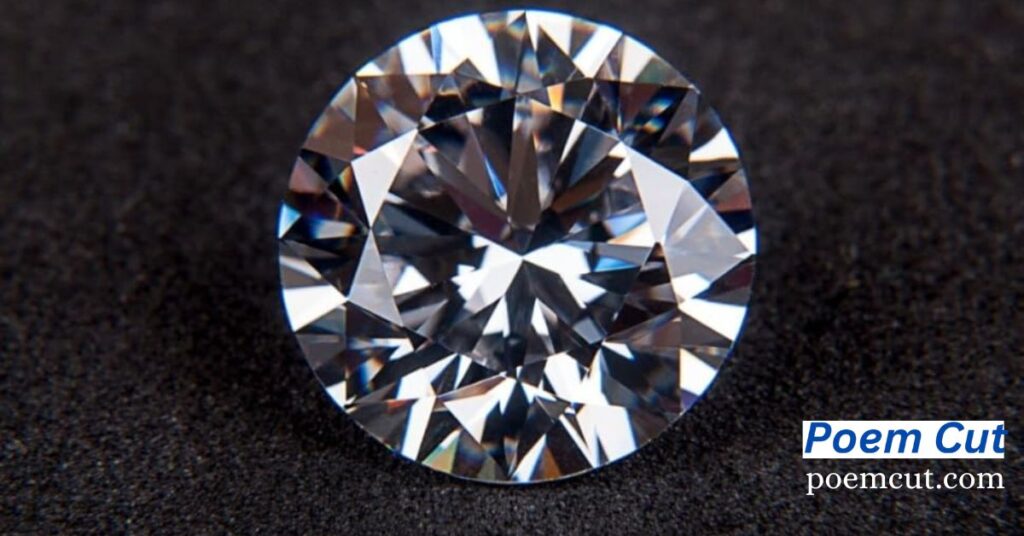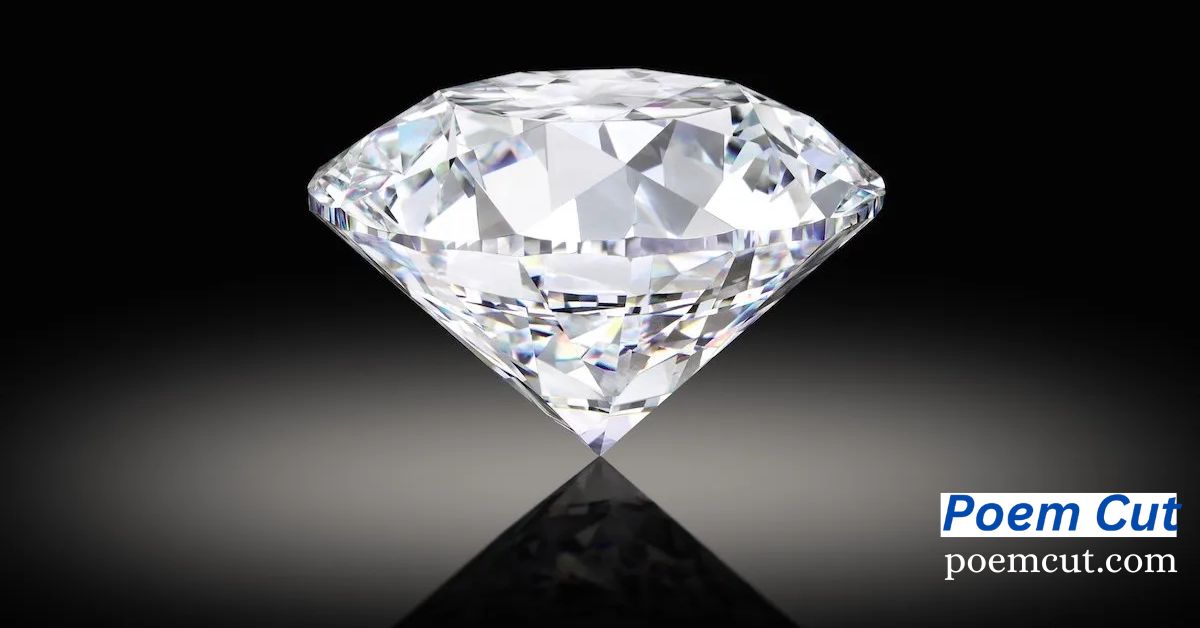Diamante poems are short, structured, and visually appealing poems that form the shape of a diamond Diamante Poem Examples . These seven-line unrhymed poems are more than just fun shapes—they’re a powerful tool for teaching parts of speech, developing vocabulary, and exploring contrasts and synonyms.
In this comprehensive guide, you’ll discover real diamante poem examples, understand how to write them, and learn how to use them in creative writing or classroom activities.
What Is a Diamante Poem?

A diamante poem is a seven-line, diamond-shaped poem that follows a specific pattern based on parts of speech. Created by Iris Tiedt in 1969, it was originally designed as a tool for teaching grammar and creative writing to students. Each line of the poem has a grammatical purpose, building gradually from one noun to another—either synonyms or antonyms.
The poem’s shape mimics a diamond, growing in length then tapering down. It has seven lines. It does not rhyme. The structure is based on parts of speech. The focus is either on synonyms or antonyms.
The Core Structure of a Diamante Poem
Every diamante poem follows a strict seven-line format. Here’s a breakdown of what each line must include.
Example:
Fire
Hot, fierce
Blazing, burning, crackling
Flame, smoke, water, ice
Sizzling, glowing, melting
Cold, quiet
Ice
This sample uses an antonym structure, going from Fire to Ice.
Types of Diamante Poems
Synonym Diamante
A synonym diamante starts and ends with nouns that mean nearly the same thing. It describes a subject using related language.
Example:
Friend
Loyal, kind
Helping, sharing, laughing
Companion, confidant, pal, buddy
Joking, smiling, caring
Supportive, understanding
Ally
Antonym Diamante
An antonym diamante starts with one idea and ends with its opposite. It explores contrast in a short poetic format.
Example:
Morning
Bright, fresh
Rising, warming, shining
Sun, light, moon, dark
Cooling, quieting, fading
Silent, sleepy
Night
Abstract or Thematic Diamante
This version uses concepts rather than tangible nouns—perfect for higher-level thinking and metaphorical exploration.
Example:
Peace
Calm, gentle
Breathing, pausing, meditating
Stillness, silence, noise, chaos
Exploding, shouting, raging
Furious, intense
War
Short Diamante Poem Examples

Rain
Wet, quiet
Dripping, falling, dancing
Mist, puddle, storm, sky
Pouring, splashing, calming
Soft, cool
Cloud
Book
Worn, silent
Resting, waiting, sharing
Pages, tales, ink, thought
Flipping, whispering, drifting
Wise, quiet
Story
Hope
Bright, strong
Lifting, holding, glowing
Dream, courage, doubt, fear
Fading, trembling, hiding
Cold, lost
Despair
Wind
Swift, free
Blowing, howling, dancing
Gusts, leaves, chill, breath
Spinning, whirling, sighing
Calm, low
Breeze
Time
Fast, quiet
Ticking, slipping, running
Second, hour, past, now
Waning, drifting, fading
Soft, gone
Memory
Love
Warm, deep
Caring, giving, sharing
Touch, heart, tear, smile
Holding, reaching, aching
True, bold
Devotion
Night
Dark, cold
Sleeping, dreaming, resting
Stars, moon, wind, clouds
Shivering, glowing, floating
Quiet, calm
Evening
Joy
Bright, pure
Laughing, playing, shining
Smile, song, dance, hug
Skipping, shouting, loving
Soft, light
Happiness
Leaf
Green, crisp
Blowing, swirling, dropping
Branch, breeze, lawn, wind
Floating, fluttering, landing
Brown, curled
Autumn
Ocean
Vast, deep
Roaring, swirling, moving
Wave, tide, shore, sand
Washing, gliding, whispering
Blue, calm
Sea
Writing Process for Diamante Poems
Writing a diamante poem is both creative and logical. Begin with brainstorming. Think about a topic or emotion you want to explore. Write down related nouns, adjectives, and verbs. Use a thesaurus if you need stronger words.
Then choose your structure. Is it going to follow a synonym or antonym model? After that, organize your words by line type. Try different combinations. Think about how the center (line 4) shifts the mood. Edit. Read aloud. Check for part-of-speech accuracy.
A strong diamante poem isn’t just visually striking.
The Role of Vivid Adjectives and Verbs
The key to great diamante poetry lies in choosing bold, vivid language. Avoid overused words like nice or good. Instead, use descriptive, imaginative terms.
For instance, instead of sad, try sorrowful, grieving, or desolate. Rather than walk, consider gliding, stomping, or limping.
Creative Classroom Integration
Diamante poems are perfect for grammar lessons, vocabulary review, and thematic units. Pair them with art assignments. Let students illustrate their diamond-shaped poems. Use diamantes for seasonal writing (Winter vs Summer), historical figures (Lincoln vs King), or scientific ideas (Solid vs Liquid).
Have students write synonym diamantes about themselves. Or assign antonym poems to explore opposing feelings—like fear vs courage.
Poetry Prompts and Challenges
Encourage creativity with writing prompts:
Write a diamante poem about your pet.
Create a diamante using only nature terms.
Choose two opposing emotions for an antonym poem.
Write a poem using all five senses in your word choice.
Combine a diamante poem with a visual art piece.
Literary Value and Educational Purpose
Though diamante poems are structured, they can still be deeply poetic. Writers must distill complex ideas into compact lines. This discipline strengthens all forms of writing.
Many famous poets—like William Carlos Williams—use minimalism to powerful effect. Diamantes echo that style, compressing emotion and thought into brief form.
Advanced Ideas Mirrored or Double Diamantes

Try pairing diamante poems together for a mirrored effect. Write one on hope and another on despair. Use contrasting colors in layout. Or write a progressive diamante that changes gradually through each line.
Example:
Fear
Dark, trembling
Creeping, hiding, lurking
Shadows, footsteps, breath, scream
Hoping, breathing, rising
Steady, bright
Courage
More Short Diamante Poem Examples for Inspiration
Dream
Soft, distant
Floating, fading, shifting
Whisper, fog, light, stars
Changing, growing, ending
Sweet, strange
Sleep
River
Cool, winding
Rushing, flowing, sparkling
Pebbles, banks, reeds, sky
Trickling, dancing, babbling
Clear, bright
Stream
School
Busy, loud
Learning, reading, writing
Desk, bell, chalk, friends
Working, thinking, testing
Focused, brave
Class
City
Tall, bright
Buzzing, racing, glowing
Traffic, noise, neon, night
Humming, beeping, pulsing
Fast, wild
Metro
Silence
Still, deep
Waiting, listening, watching
Breath, heart, wind, clock
Pausing, holding, softening
Wide, slow
Calm
Conclusion
Diamante poems offer a powerful way to learn grammar, express creativity, and explore language. With these real and meaningful diamante poem examples, detailed instructions, and writing techniques, you now have everything you need to begin. Pick a noun, shape your words carefully, and let your imagination form a diamond on the page.








